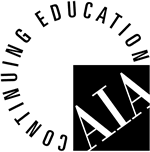| |

CONTACT MM | REQUEST A SEMINAR

AIA COURSE DESCRIPTIONS:
Provider number: J230
Course number: EJA1
Program title: Principals and Practices of Expansion Control Systems.
Outline:
- What is an Expansion Joint?
- Where do they occur?
- Are they optional?
- Can I make them go away?
- Design and Selection Criteria Expansion Joints
- Type of Movement – seismic, thermal, lateral shear.
- Service Environment – traffic loads, waterproofing, durability.
- Code & Life Safety – ADA compliance, fire rated, trip hazards.
- Aesthetic Considerations – metal finishes, paint options, color options, faux finishes.
Three specific, measurable learning objectives (new skills or knowledge)
- Trip hazards/ADA (Americans with Disabilities Act) requirements.
- Proper selection/movement/seismic considerations.
- Waterproof and load bearing characteristics.
Provider number: J230
Course number: EJP1
Program Title: Fundamental Design of Seismic & Waterproof Expansion Joint Systems in Parking Structures & Stadium
Outline
- Traffic & Service Conditions Dictate Design
- Type and Speed of Traffic / Service Conditions
- Waterproofing vs. Movement Considerations
- Temperature Adjustment Principals
- Concrete Construction
- Design and Selection Criteria of Exterior Expansion Joints for:
- Types of Structures – precast, post tensioned, etc.
- Coefficient of Expansion – static vs. dynamic movement
- Direction & Amount of Movement – thermal, seismic, lateral shear.
- Ramp Areas – entrance, helix, enplane, deplane, breakovers, etc.
- Heavy Loads / Service Condition - cars, buses, delivery trucks, fork trucks, snowplows, etc.
- Pedestrian Safety – ADA compliance vs. trip hazards
- Life Safety – fire rated designs
Three specific, measurable learning objectives (new skills or knowledge)
- Understanding the relationship between type of structure, concrete construction and watertight expansion joint design.
- Proper system selection based on service, climate, movement and loading conditions.
- Identify the difference between trip hazards and the Americans with Disabilities Act (ADA).
Provider number: J230
Course number: EJAP2
Program title: Fundamental Expansion Joint Principals
Outline
- What is a Movement Joint:
- Definition
- Types of Joints
- What expansion joints accommodate
- Where they occur
- How much they move
- Where is a seismic expansion joint?
- Current seismic philosophy
- Seismic considerations
- Wind shear
- Centering devices
- Design and Selection Criteria Expansion Joints
- Type of structure
- Type of construction/finish
- Why do expansion joints fail?
- Type of traffic
- Understanding service needs
- Expected service condition
- Climate, weather, exposure
Three specific, measurable learning objectives (new skills or knowledge)
- What are expansion joints
- What are seismic expansion joints
- Design and selection criteria for expansion joints
Provider number: J230
Course number: FB1
Program title: Life Safety Fire Barrier Systems 101
Outline
- History of Fire Barriers
- Testing and Cycling Movement
- Laboratory Requirements
- Types of Fire Barriers
- Installation Techniques
- Quality Assurance
Three specific, measurable learning objectives (new skills or knowledge)
- Types of Fire Barriers
- Testing and Cycling Movements
- Installation Techniques
Provider number: J230
Course number: FB2
Program title: Life Safety Requirements for Fire Rated Expansion Joints.
Outline
- Properly engineered fire rated expansion joints.
- Seismic vs. Thermal Movement project requirements.
- Installation / Life Safety – who’s installing the fire barrier?
- Compatibility with expansion joint systems.
- ASTM and UL dynamic movement and fire test requirements.
- Dynamic vs. Static testing requirements (fatigue analysis).
- Smoke, Flame Spread, Hose Stream and Cycling requirements.
- Heat rise and spontaneous combustion.
- Fire Barrier hourly ratings and selection.
- Types of hourly ratings (1 through 4 hour)
- Types of materials – ceramic blankets, caulks, intermecents.
- Compatibility with surrounding substrates.
Three specific, measurable learning objectives (new skills or knowledge)
- Properly engineered fire rated expansion joints.
- ASTM and UL dynamic movement and fire test requirements.
- Fire Barrier hourly ratings and selection.
Provider number: J230
Course number: FB3
Program title: Life Safety Fire Barrier Systems 301
Outline
- Fire Rated Expansion Joints
- Structures using fire barrier
- Early history and test standards
- Testing and cycling movements
- Testing and listing laboratories
- Laboratory requirements
- Test Costs
- Types of fire barriers
- Installation techniquest
- Quality assurance
Three specific, measurable learning objectives (new skills or knowledge)
- Fire Barrier hourly rating and selection
- Fire test requirements
- Properly engineered fire rated expansion joints
Provider number: J230
Course number: FB4
Program title: Fundamental Approval and Inspection Principles: Fire Rated Seismic Expansion Joint Systems
Outline
- Basic definitions of thermal and seismic expansion joints
- Why and where they occur
- Typical design and selection criteria used by architects and building designers
- Fire rated barriers for expansion joints
- History of product development
- Past and current code requirements
- Testing standards
- Basic types of products likely to be seen on project sites
- Frequently asked questions
- Inspection checklist
Three specific, measurable learning objectives (new skills or knowledge)
- Fire rated barriers for expansion joints
- History of Fire Barriers
- Testing standards and code requirement
|





